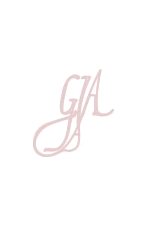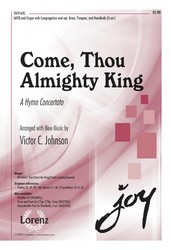Scripture References:
st.3 = John 15:26
The anonymous text dates from before 1757, when it was published in a leaflet and bound into the 1757 edition of George Whitefield's Collection of Hymns for Social Worship. The text appears to be patterned after the British national anthem, "God Save the King." Filled with names for members of the Godhead, this song exhibits a common trinitarian structure, addressing God the Father (st. 1), God the Son (st. 2), and God the Holy Spirit (st. 3), concluding with a doxology to the Trinity (st. 4).
The text has often been attributed to Charles Wesley, since the leaflet also included a hymn text from his pen (“Jesus, Let Thy Pitying Eye"); however, "Come, Thou Almighty King" was never printed in any of the Wesley hymnals, and no other Wesley text is written in such an unusual mete
Liturgical Use:
Beginning of worship; as a doxology (st.4)
--Psalter Hymnal Handbook
===================
Come, Thou Almighty King. [Holy Trinity.] The earliest form in which this hymn is found is in 5 stanzas of 7 lines, with the title, "An Hymn to the Trinity," on a tract of four pages, together with stanzas 1, 2, 6, 10, 11, and 12, of C. Wesley's hymn on "The Backslider," beginning "Jesus, let Thy pitying eye," &c, thus making up a tract of two hymns. The date of this tract is unknown. It is bound up with the British Museum copy of the 6th ed. of G. Whitefield's Collection, 1757, and again with the copies in the same library of the 8th ed., 1759, and the 9th, 1760. In subsequent editions beginning with the 10th, 1761, both hymns were incorporated in the body of the book. M. Madan included it in the Appendix to his Collection in 1763, No. cxcv., and through this channel, together with the WhitefieldCollection, it has descended to modern hymnals. The loss of the titlepage (if any) of the above tract renders the question of its authorship one of some doubt. The first hymn in the tract is compiled, as indicated, from C. Wesley's hymn, "Jesus, let Thy pitying eye," which appeared in his Hymns & Sacred Poems, 1749, some eight years before the abridged form was given in G. Whitefield’s Collection. The hymn, "Come, Thou Almighty King," however, cannot be found in any known publication of C. Wesley, and the assigning of the authorahip to him is pure conjecture. Seeing that it is given, together with another hymn, at the end of some copies of the 6th, 8th and 9th ed. of Whitefield's Collection (1757, 1759 and 1760), and was subsequently em¬bodied in that Collection, the most probable conclusion is that both hymns were printed by Whitefield as additions to those editions of his collection, and that, as in the one case, the hymn is compiled from one by C. Wesley, so in this we have probably the reprint of the production of an author to us as yet unknown. Much stress has been laid on the fact that the late D. Sedgwick always maintained the authorship of C. Wesley, and that from his decision there was no appeal. The "S. MSS." show clearly that (1) Sedgwick's correspondence respecting this hymn was very extensive; (2) that he knew nothing of the British Museum copies noted above; (3) that he had no authority for his statement but his own private opinion Based on what he regarded as internal evidence alone; (4) and that all the Wesleyan authorities with whom he corresponded, both in G. Britain and America, were against him. His authority is, therefore, of no value. The evidence to the present time will admit of no individual signature. It is "Anon.”
The use of this hymn, both in Great Britain, the Colonies, and America, is very extensive. It has also been rendered into various languages. Original text, Lyra Britannica, 18G7, p. 656; Snepp's Songs of Grace & Glory, 1872.
--John Julian, Dictionary of Hymnology (1907)
Hymnary Pro Subscribers
Access
an additional article
on the Canterbury Dictionary of Hymnology:
Hymnary Pro subscribers have full access to the Canterbury Dictionary of Hymnology.
Get Hymnary Pro


 My Starred Hymns
My Starred Hymns







